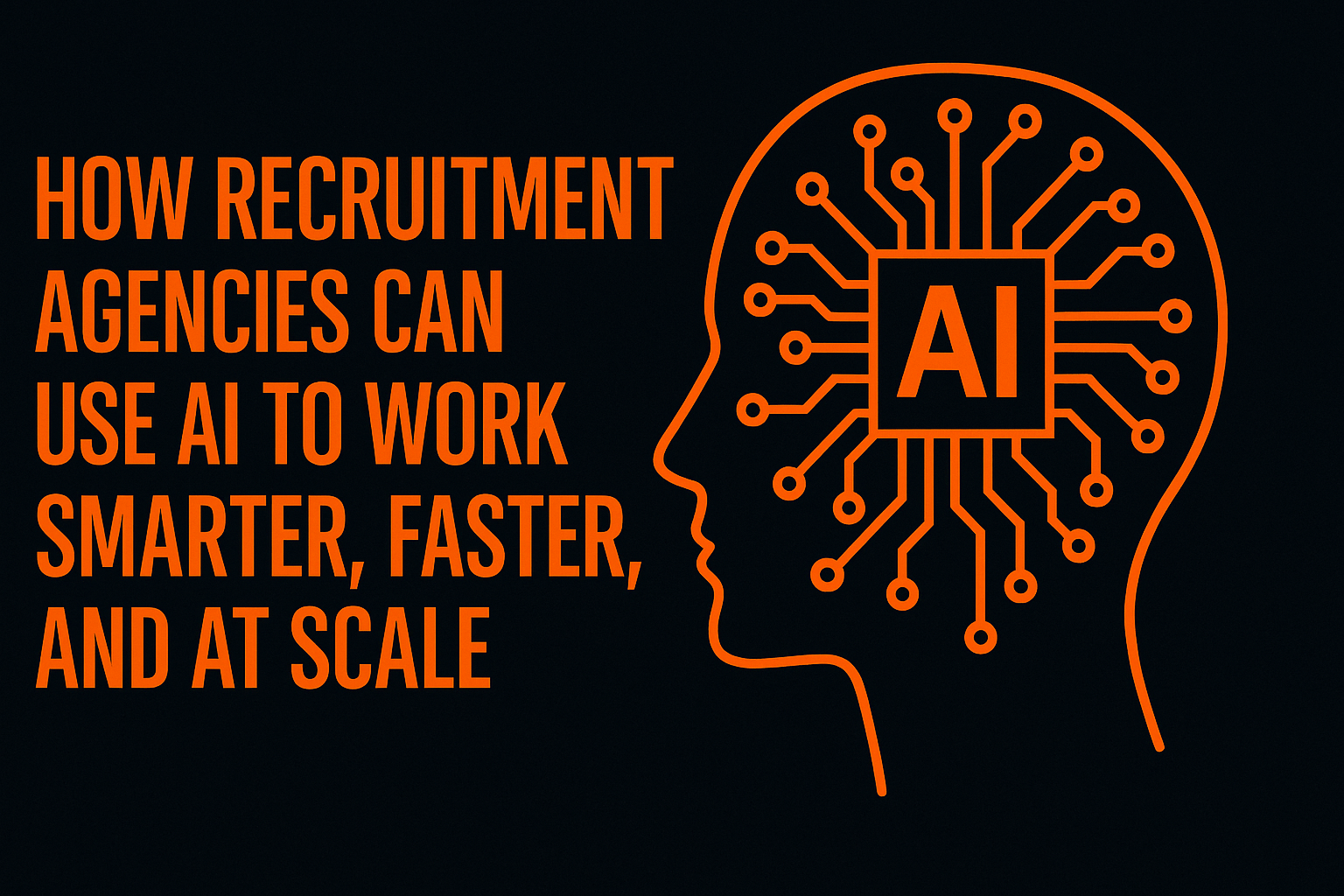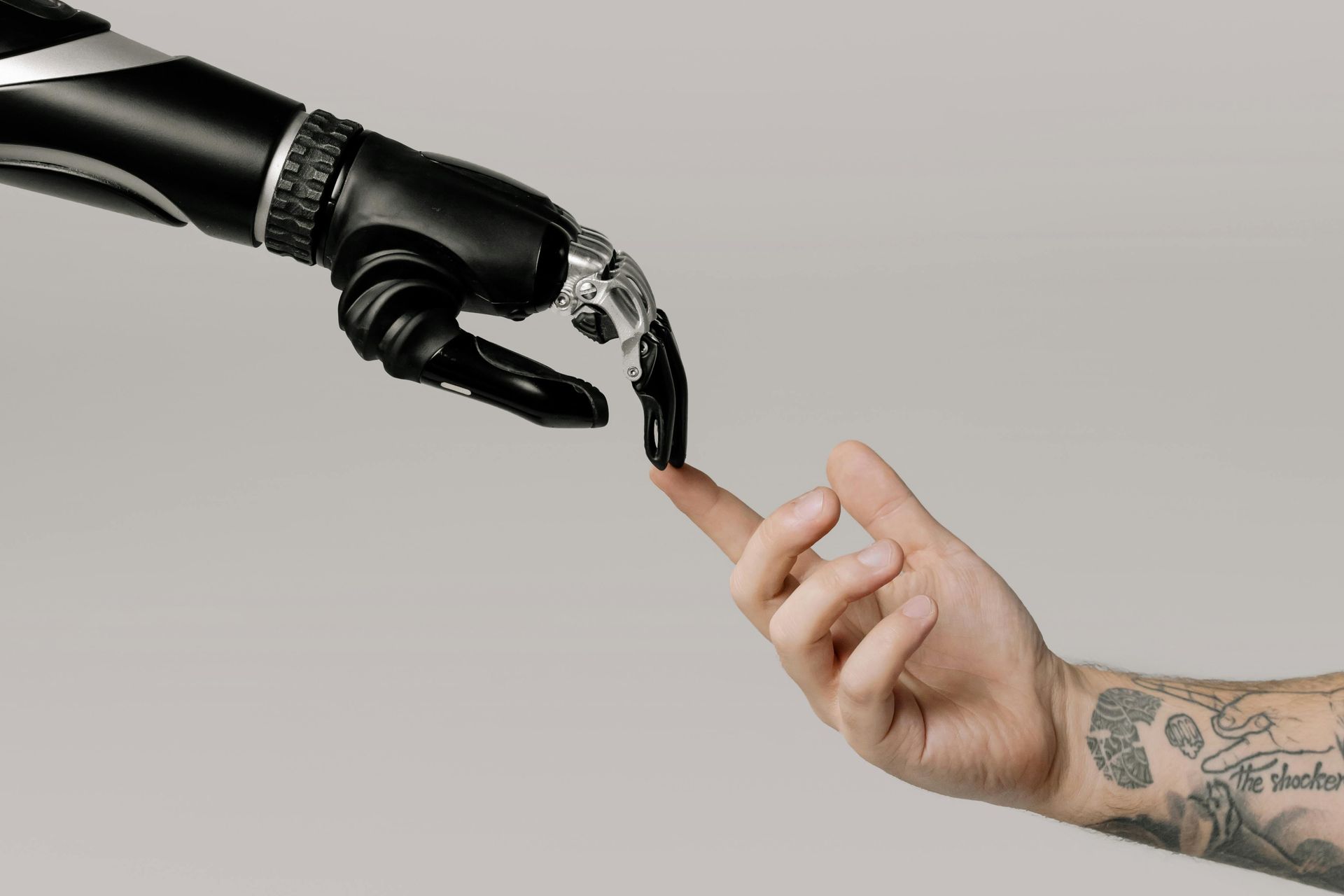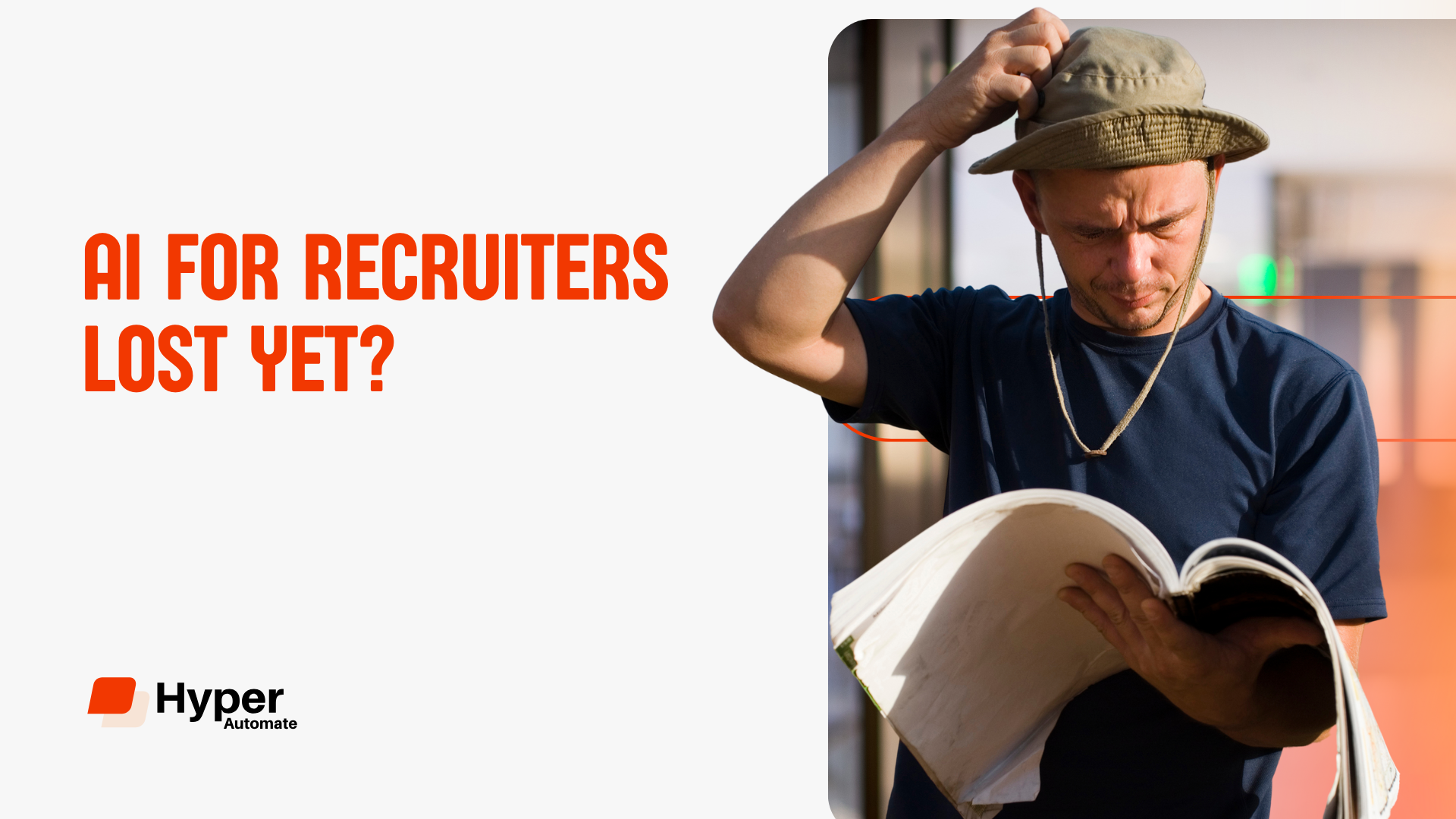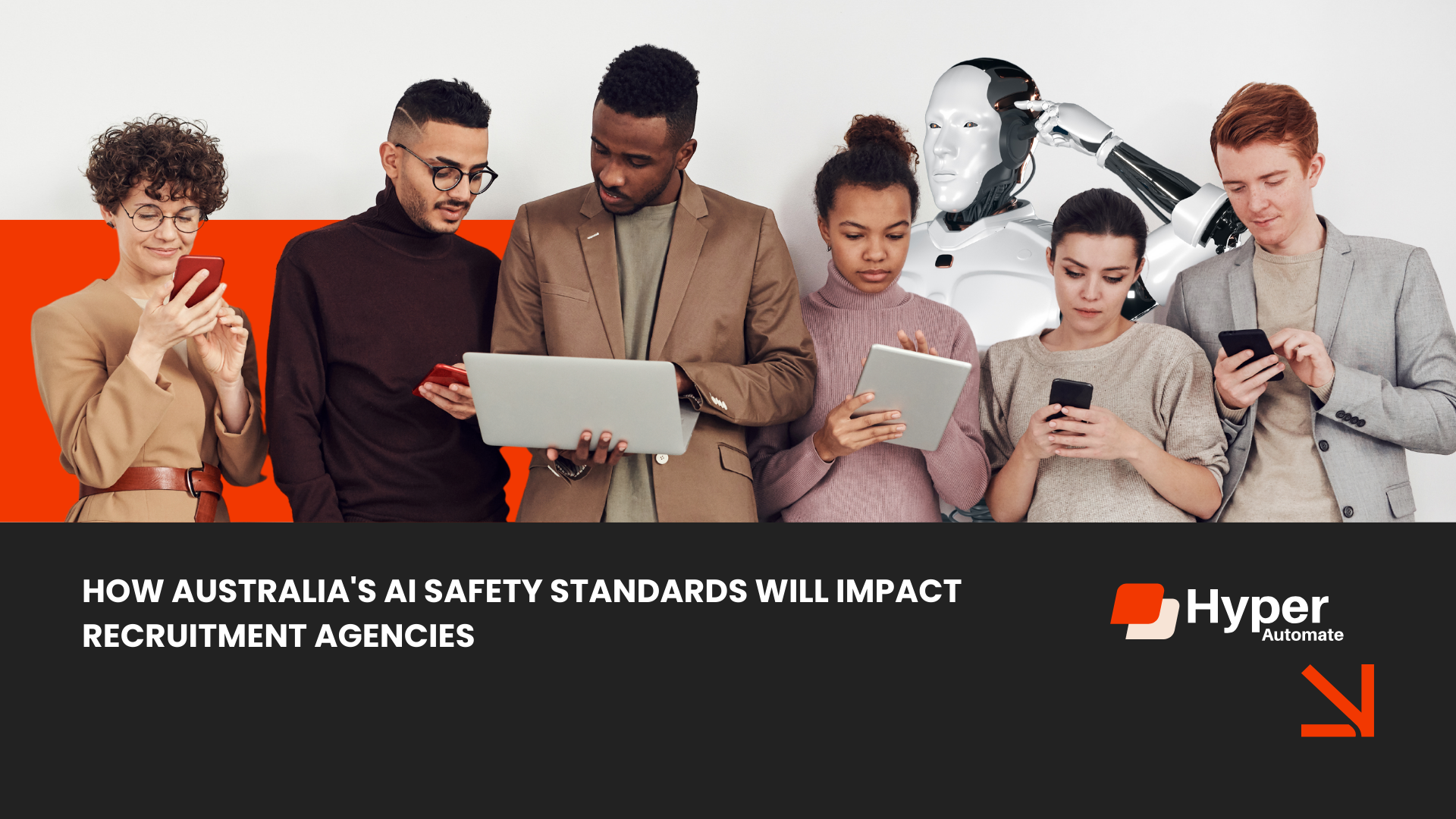How Recruitment Agencies Can Use AI to Work Smarter, Faster, and at Scale
Its a big question in the market at the moment "How is AI useful in recruitment?"

Artificial Intelligence (AI) is no longer a futuristic buzzword. In 2025, it is a daily reality transforming the way recruitment agencies in Australia attract, assess, and place talent. Among all AI technologies, generative AI is proving to be one of the most disruptive. With its ability to create, summarise, discover insights, and automate workflows, it has the potential to revolutionise recruitment in much the same way the internet or mobile devices did in previous decades.
For recruitment leaders, the question is no longer “Should we use AI?” but rather “How quickly can we implement it to stay competitive?”
In this recruitment AI resource, we’ll explore how AI and automation can reshape the recruitment industry in Australia. We’ll cover the four core capabilities of generative AI, map out a step-by-step playbook for getting started, highlight recruitment-specific use cases, and examine the measurable return on investment (ROI) that agencies can achieve.
Whether you’re running a boutique staffing agency in Melbourne or a national firm placing contractors across mining, healthcare, and technology, the opportunity to leverage AI has never been greater.
Why AI is a Game-Changer for Recruiters
Recruitment is an industry where efficiency, speed, and human judgement intersect. Agencies succeed by building strong relationships with clients and candidates, while simultaneously managing thousands of repetitive administrative tasks — from writing job ads to screening CVs, conducting compliance checks, and scheduling interviews.
Generative AI offers a unique solution for recruiters because it:
- Automates the repetitive: freeing recruiters from manual admin.
- Scales creativity and engagement: drafting job ads, outreach emails, and social posts in seconds.
- Improves decision-making: surfacing insights from large candidate pools, databases, and market research.
- Enhances candidate and client experience: powering 24/7 chatbots, personalised communication, and faster turnaround.
According to McKinsey & Company, generative AI could add USD $2.6 to $4.4 trillion annually to global productivity. Recruitment agencies stand to benefit directly, as productivity improvements translate into more placements per consultant, stronger candidate pipelines, and better client retention.

The Four Core Capabilities of AI in Recruitment
After reading googles "the executive guide to generative AI" we have identified four fundamental capabilities: creation, summarisation, discovery, and automation. Each can be mapped to specific recruitment use cases.
1. Creation – Job Ads, Outreach, and Content
Recruiters spend countless hours drafting and rewriting job advertisements, InMail messages, and proposals for clients. AI tools can generate:
- Compelling job ads optimised, but not for
SEO, google hates Job ads as they expire and it actually damages over all SEO, but make them compelling enough for the right candidates
- Personalised candidate outreach emails at scale.
- Employer branding content for careers pages and LinkedIn.
- Tailored client proposals and market maps.
Instead of starting from scratch, consultants can input a prompt such as: “Write a job ad for a Sydney-based Mechanical Engineer role with an emphasis on safety compliance and career growth”. The AI produces a draft that can then be edited and finalised, saving hours per week.
2. Summarisation – CVs, Interviews, Market Insights
Recruiters often need to distil large volumes of information into concise insights for hiring managers. AI excels at:
- Summarising CVs into bullet-pointed profiles.
- Converting lengthy interview notes into structured feedback.
- Generating executive summaries for client shortlists.
- Extracting key insights from labour market data or salary surveys.
This allows consultants to spend more time building relationships and less time formatting documents.
3. Discovery – Hidden Matches and Trends
Recruitment databases are full of hidden talent. AI-driven discovery can:
- Identify potential candidate matches who were overlooked in past searches.
- Analyse skills adjacency (e.g., a data analyst transitioning into business intelligence).
- Spot trends in candidate applications across industries.
- Benchmark salaries and demand in real-time.
Discovery turns existing data into actionable intelligence, creating a competitive advantage for agencies that adopt it.
4. Automation – Compliance, Screening, Scheduling
Perhaps the most powerful use case in recruitment is workflow automation. AI can:
- Automate
right-to-work checks and compliance paperwork.
- Pre-screen candidates with conversational bots that capture basic information.
- Schedule interviews across multiple calendars without human intervention.
- Auto-generate contracts and onboarding documents.
Automation doesn’t remove the recruiter from the process — it ensures recruiters spend time on high-value conversations instead of repetitive admin.


The Recruiter’s 10-Step Playbook to Implementing AI
The eBook outlines a 10-step framework to launch a generative AI use case in 30 days. Here’s how that translates for recruitment agencies:
- Identify a specific domain – Choose candidate sourcing, job ad creation, or compliance as your starting point.
- Select a persona – Start with the recruiter or resourcer role, which handles repetitive tasks.
- Determine data sources – Integrate your ATS (JobAdder, Vincere, Bullhorn), job boards (Seek, Indeed), and LinkedIn.
- Create a “tiger team” – Business lead, recruiter (persona expert), and AI vendor/consultant.
- Define goals and KPIs – Reduce time-to-hire, increase placements per recruiter, or improve candidate NPS.
- Design prompts – Work with your team to create recruitment-specific AI prompts (job ads, CV summaries, outreach emails).
- Build UX/UI – Embed AI directly into the recruiter’s workflow inside ATS or CRM.
- Expand to more users – Roll out to a pilot group of recruiters before scaling.
- Develop AI operations plan – Ensure responsible use, bias checks, and compliance with Australian employment law.
- Expand use cases – Once job ad generation works, extend AI to compliance, sourcing, and client proposals.
This structured approach ensures agencies adopt AI safely and effectively without overwhelming teams.
Recruitment Use Cases for AI in Australia
Candidate Attraction
- AI-generated job ads optimised for keywords like “Sydney IT jobs” or “nursing roles Melbourne”.
- Chatbots on career sites answering candidate FAQs.
- Social media content tailored to passive candidates.
Candidate Screening
- Automated resume parsing that ranks candidates by skill match.
- Summarised CVs and cover letters for quick review.
- Screening bots that ask pre-qualifying questions (salary expectations, availability, visa status).
Client Business Development
- AI-generated market insights and salary guides.
- Auto-drafted business proposals and talent mapping presentations.
- Competitive intelligence summarised for BD meetings.
Temp and Contract Recruitment
- Automated compliance checks (VEVO, WHS, references).
- Roster scheduling powered by AI assistants.
- AI chatbots handling payroll FAQs for contractors.
Employer Branding and Marketing
- AI-powered content calendars for LinkedIn.
- Automated newsletters for candidate pools.
- AI-generated video job ads and employer stories.
Responsible AI in Recruitment
With power comes responsibility. The eBook emphasises human-in-the-loop oversight. In recruitment this is critical for:
- Bias mitigation: AI must not filter candidates unfairly. Recruiters should validate outputs to ensure inclusive hiring.
- Compliance: Recruitment agencies in Australia must adhere to
Fair Work legislation, privacy laws, and anti-discrimination rules. AI outputs should always be reviewed for compliance.
- Transparency: Candidates and clients should know when they’re interacting with AI.
Responsible adoption will build trust, while misuse could damage agency reputations.
Measuring ROI of AI in Recruitment
Recruitment is a commercial industry. Leaders need evidence that AI investments deliver measurable returns. KPIs include:
- Time-to-hire reduction (average days to fill a role).
- Placements per recruiter (productivity).
- Candidate Net Promoter Score (NPS).
- Cost-per-hire reduction (manual vs automated process).
- Shortlist quality (percentage of client-accepted candidates).
- Recruiter satisfaction (hours saved on admin).
Case examples from early adopters suggest:
- 30% lower cost-per-hire using automation.
- 25% faster time-to-hire with AI shortlisting.
- 50% more placements per recruiter due to efficiency.
For Australian agencies battling talent shortages, these metrics provide a strong business case.
Challenges and Risks to Consider
While opportunities are vast, agencies must manage risks:
- Data Privacy: Candidate data must be handled according to Australian Privacy Principles (APPs).
- Bias: AI models can replicate existing hiring biases if unchecked.
- Integration Costs: Connecting AI with legacy ATS or CRMs requires investment.
- Change Management: Recruiters need training to trust and use AI effectively.
- Over-automation: Removing too much human touch risks losing personal connections — a core value of recruitment.
The Future of AI in Australian Recruitment
AI won’t replace recruiters — it will augment them. The human ability to build relationships, understand cultural fit, and negotiate offers will always be central. But recruiters who embrace AI will:
- Source candidates faster.
- Deliver better client insights.
- Free up time to focus on relationships.
- Scale operations without proportionally increasing headcount.
Agencies that lag risk being left behind as competitors leverage AI for faster, cheaper, and better results.
Hyper Automates “Final Word”
The recruitment industry in Australia is at a crossroads. Generative AI and automation present a “once-in-a-generation” opportunity to transform operations, improve candidate and client experiences, and build more scalable businesses.
By leveraging the four core capabilities — creation, summarisation, discovery, and automation — and following a structured 10-step playbook, recruitment agencies can quickly move from experimentation to tangible business results.
The key is to start small, measure ROI, and scale responsibly. Agencies that embrace this approach will not only work smarter and faster, but also position themselves as leaders in an increasingly competitive market.
Let Hyper Automate Consulting Services unlock your agency's potential.
We specialise in streamlining your operations through AI, automation, and the latest recruitment technology. Our 30+ years of expertise ensure you adopt the right solutions to:
- Eliminate tedious admin work
- Centralise and leverage your data
- Confidently adopt AI
- Maximise your tech ROI




